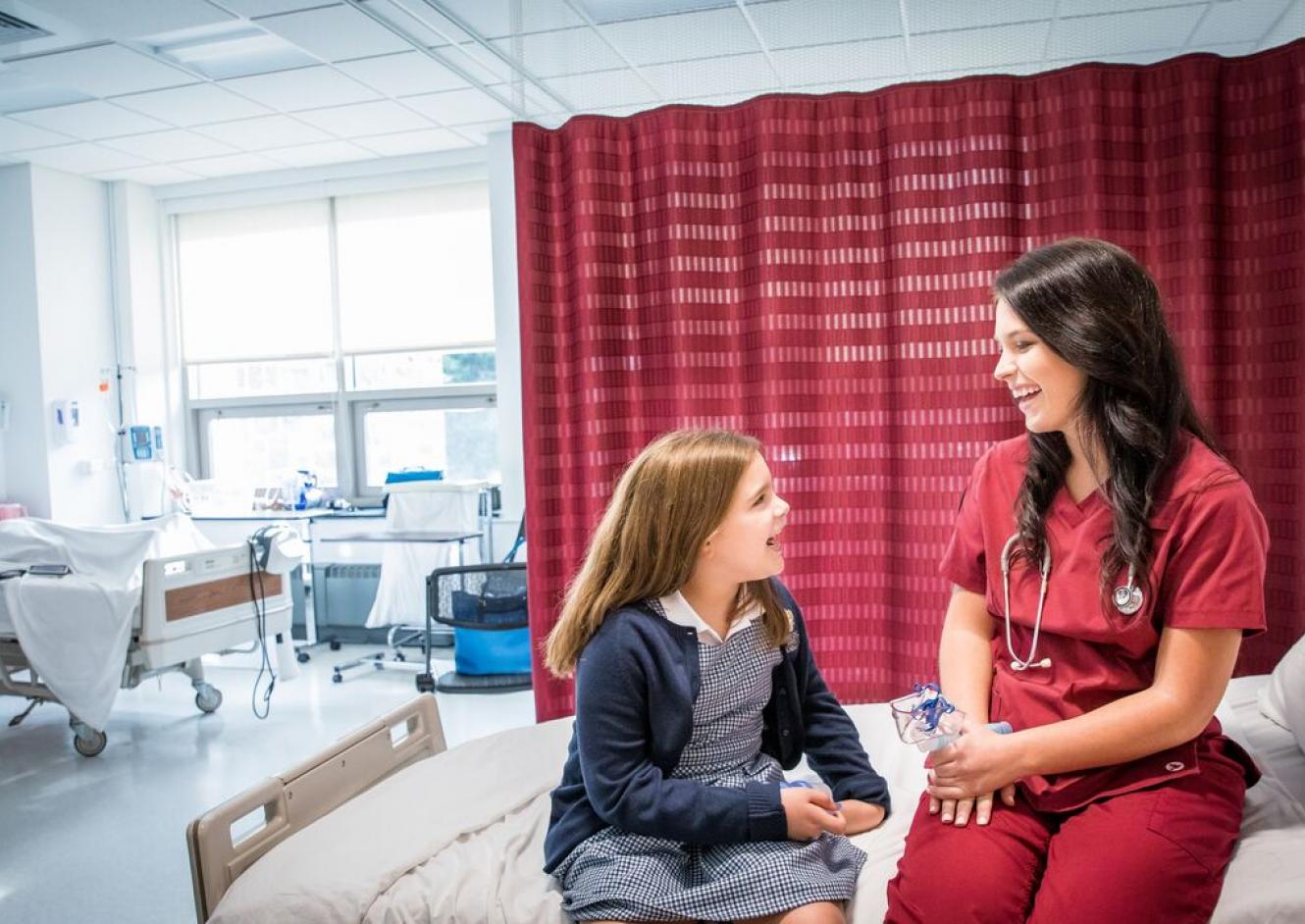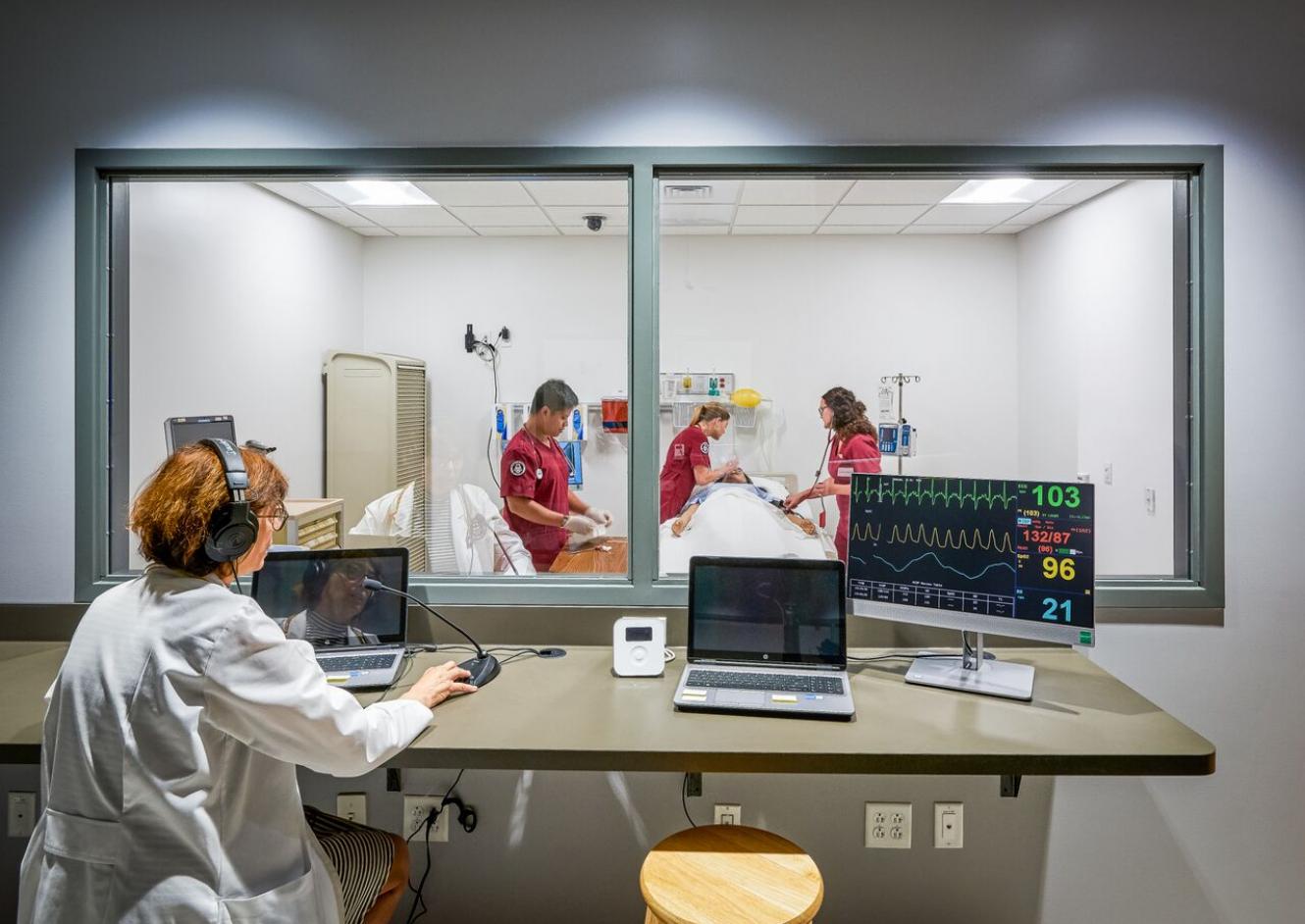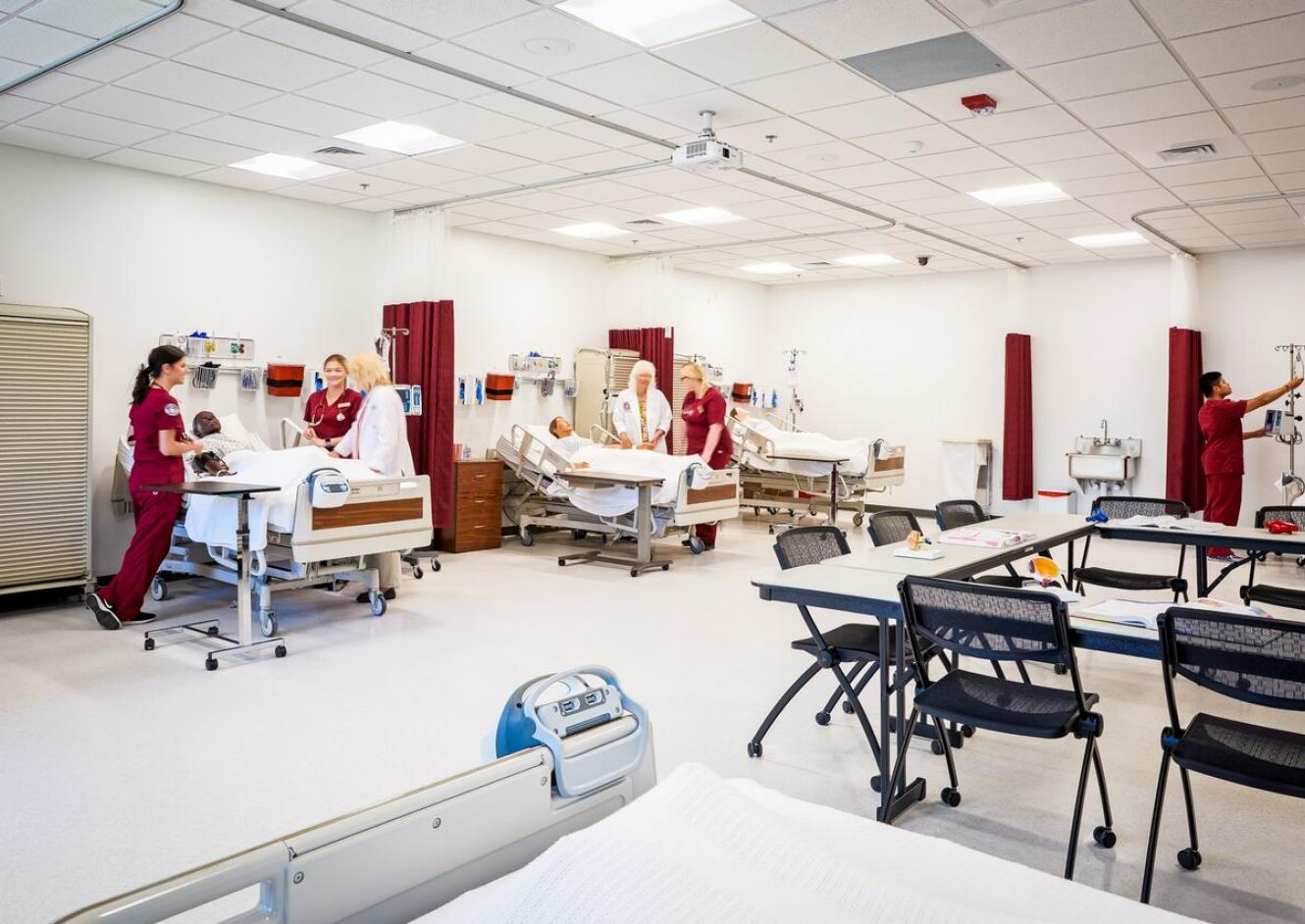


Just a couple of months ago, my 5-year-old daughter, Lucy, was admitted to the Children’s Hospital of Philadelphia (CHOP) for 3 days. Understandably, my wife and I were anxious -- but the medical team at the hospital made all the difference. They thoughtfully and competently helped us every step of the way.
I was especially impressed by the top-notch nursing staff. They even had a team of Nurses and Child Life Specialists whose entire job was to educate Lucy about her condition in language that she could understand.
What a beautiful picture of a nursing staff caring for our daughter (and us) in a time of stress. Our little family thanked God every day for competent, confident nurses who cared.
These are the kind of nurses Eastern is shaping.
I recently had the opportunity to tour Eastern’s new Nursing Resource and Simulation Lab with Dianne DeLong, Chair of the Nursing Department. With Eastern’s classic maroon and white walls, the space was beautiful. As I turned the corner to enter the clinical area, the walls and flooring changed to resemble a modern hospital.
“Once they cross this line,” Dianne said pointing to the change in flooring, “students are entering a clinical area as a nurse.” These visual markers help student nurses make the mental transition to their professional identity, reinforcing the importance of caring for others with excellence and focus.
I was most impressed by the simulation rooms. These spaces look like hospital rooms to the naked eye, but are equipped with multiple cameras, a fully functioning human patient simulator, monitors, and a one-way mirror to a control room.
Expert faculty can monitor a student’s work through the glass with multiple camera angles, and are able to speak to the student directly through an overhead PA system or, amazingly, through the human patient simulator itself. Yes, the faculty member can act as if they are the patient and even respond to medication (changes in breathing, heart rate, etc.).
This training encourages student nurses to own the room rather than rely on faculty to guide them through. Confidence and competence can develop more quickly.
“Simulation helps students in their decision making and critical thinking,” Dianne shared. “It is a safe environment. Scenarios are in place and faculty look to see how students respond. Faculty are able to give feedback on strengths, and when errors occur, they can be identified in real time.”
All in all, using these simulation labs as an added element of training better prepares our nursing students for their clinical rotations and work with people. They walk in the room prepared, having already engaged human patient simulators alone in a room where they were responsible.
As my wife and I can attest, the value of competent, confident nurses is priceless. Eastern nursing graduates are already well prepared, and the addition of this lab will take our nursing training to an even higher level, resulting in countless grateful patients (and parents) in their times of greatest stress.
This article was originally featured in the Fall 2018 Edition of Eastern Magazine. View the full magazine here.

